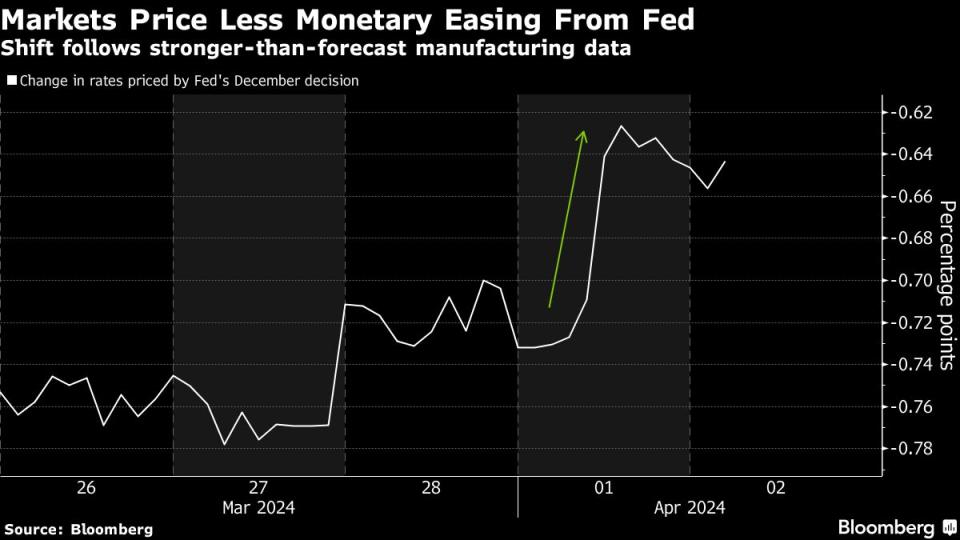Markets are back to seeing fewer rate cuts than the Fed
(Bloomberg) — For a brief moment last week, the market and the Federal Reserve were on the same page about the pace of monetary easing. It didn’t last long.
Most Read from Bloomberg
After spending much of this year making bets that were much more dovish than those of Fed officials, investors have now flipped in the opposite direction. They’re forecasting about 65 basis points of rate reductions in 2024, compared to the 75 basis points signaled by the median estimate of projections released following the Fed’s March 19-20 meeting.
“I thought it would be hard for the market to challenge the Fed on the hawkish side, but apparently it is willing to do so, in the face of some evidence,” said Benoit Gerard, a rates strategist at Natixis in Paris.
Traders are reacting to a couple of economic data points from the past few days that point to strength in the US economy, potentially reducing the need for rate cuts. Bonds have slumped in response, with the yield on 10-year US Treasuries hitting 4.35% on Tuesday, the highest level since November.
First came income and spending data for February that showed consumption remains strong. Then, on Monday, a gauge of US manufacturing activity expanded for the first time since 2022, exceeding all estimates in a Bloomberg survey of economists.
Fed Chair Jerome Powell said after the consumption data that the figures were “pretty much in line with our expectations” and repeated that the US central bank isn’t in any rush to cut interest rates.
No Fed ratesetter has spoken publicly on monetary policy since Monday’s news, though there are several on the slate for later on Tuesday, including New York Fed President John Williams, Cleveland Fed President Loretta Mester and San Francisco Fed President Mary Daly.
Data on US factory orders, light vehicle sales and job openings due Tuesday may also offer more clues on the economy ahead of key payroll numbers on Friday.
It’s not the first time in recent weeks traders have challenged the Fed’s outlook. They were also betting on fewer than 75 basis points of easing in the days leading up the March rates decision, though this time round the pricing is even more hawkish.

The shift is also casting doubt on bets that the first rate cut will land in June. The probability of a quarter-point reduction in June briefly dropped below 50% on Monday.
“While June is not off the table, market conviction for a first Fed cut by then is fading,” ING strategists including Benjamin Schroeder wrote in a note. “In the coming weeks we can expect some Fed speakers to remain vocal about June cuts, but in the end the data will be the deciding factor.”
Most Read from Bloomberg Businessweek
©2024 Bloomberg L.P.

